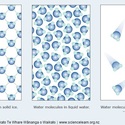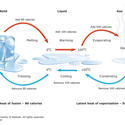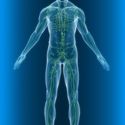If you poured some water down a slope, it would flow freely and quickly, but what about if you repeated the process with honey? Can you imagine how honey would flow down a slope? Sticky oozy honey would probably move quite a bit slower than the water. This is because honey has a different viscosity to water.
Viscosity is the measure of resistance of a fluid to flow. A fluid that is highly viscous has a high resistance (like having more friction) and flows slower than a low-viscosity fluid. To think of viscosity in everyday terms, the easier a fluid moves, the lower the viscosity. Using our earlier example, which fluid has a greater viscosity? Honey would move slower than water, so honey would have a greater viscosity.
Pressure and temperature are also considered when talking about the viscosity of a liquid. If the viscosity does not change with pressure, we describe something as being a Newtonian fluid (named after Sir Isaac Newton). However, if the viscosity does change as stress or temperature changes, we describe something as being a non-Newtonian fluid.
Viscosity is also related to a fluid’s density. Density describes the space (volume) that is occupied by a substance’s particles and is measured in kilograms per cubic metre (kg/m3). Note that this does not describe a substance’s weight.
Viscosity is usually measured in pascal-seconds (Pa-s), a measure of force equalling 1 kilogram per metre per second (kg/(m·s)).
While viscosity is most commonly associated with fluids, gases also have viscosities.
Related content
The Racing marbles activity compares the viscosity of common household substances by measuring how fast marbles move through the liquids.
The PLD webinar Chemistry made simple – properties of matter explores other properties of matter.





